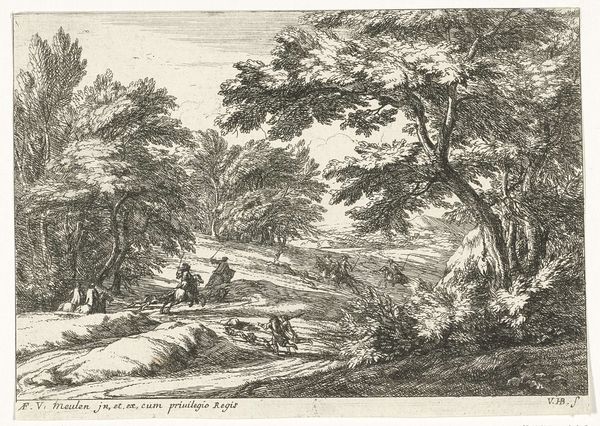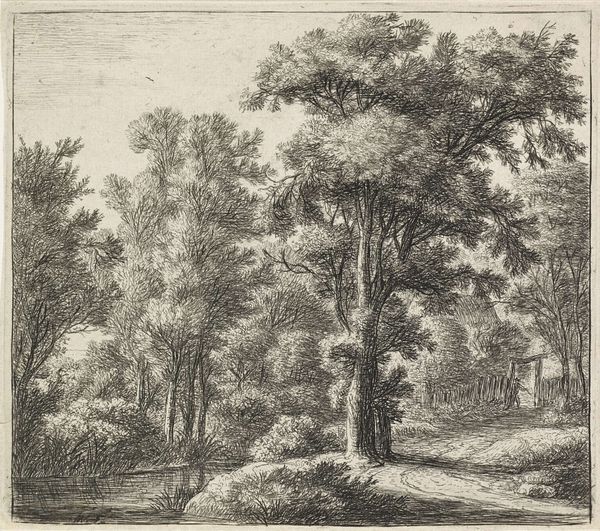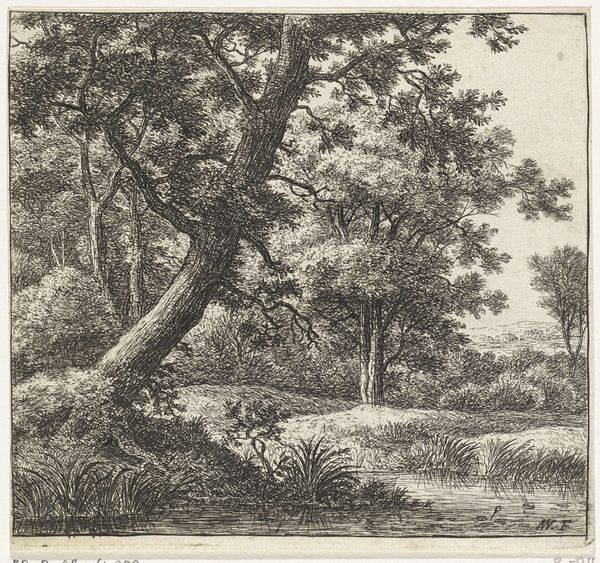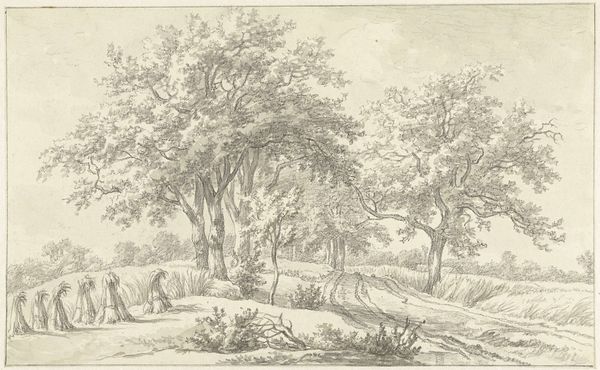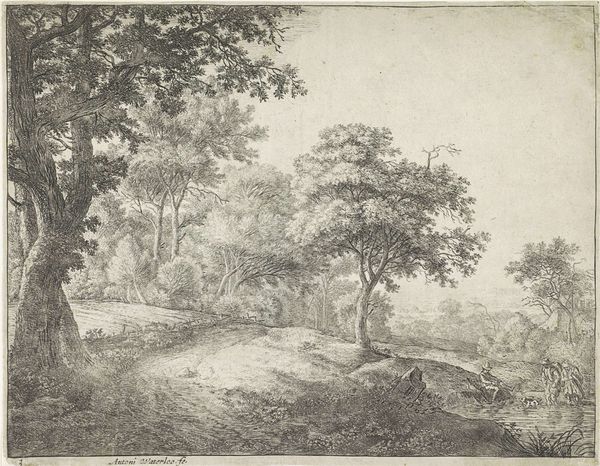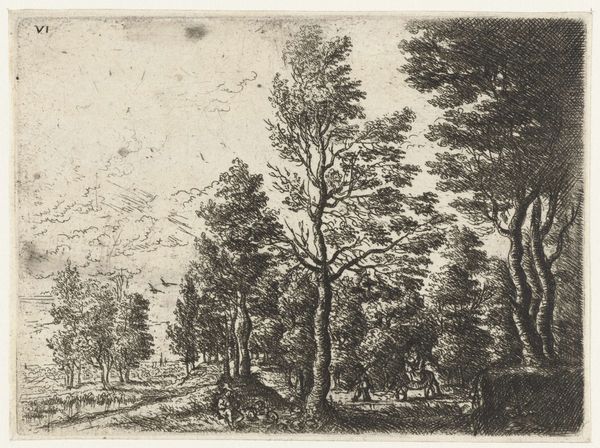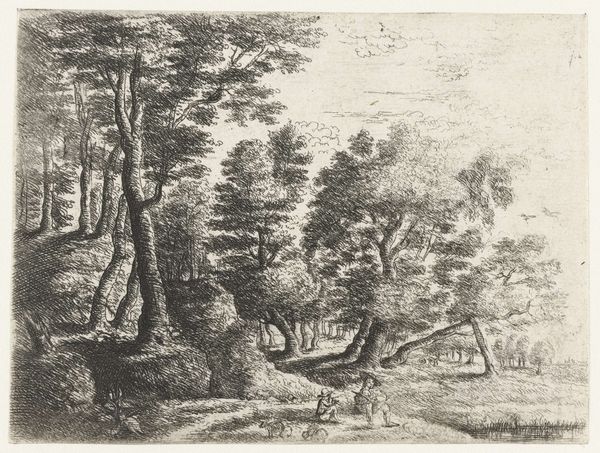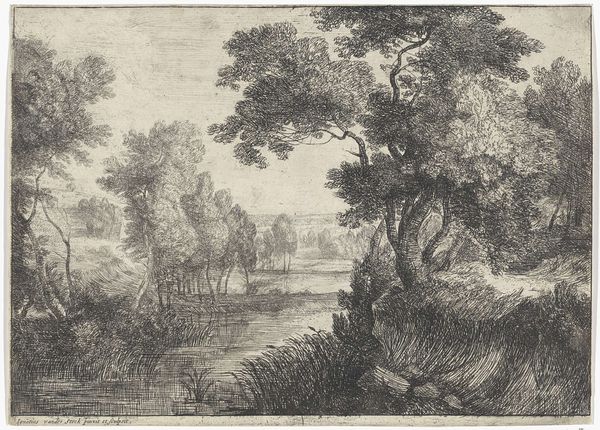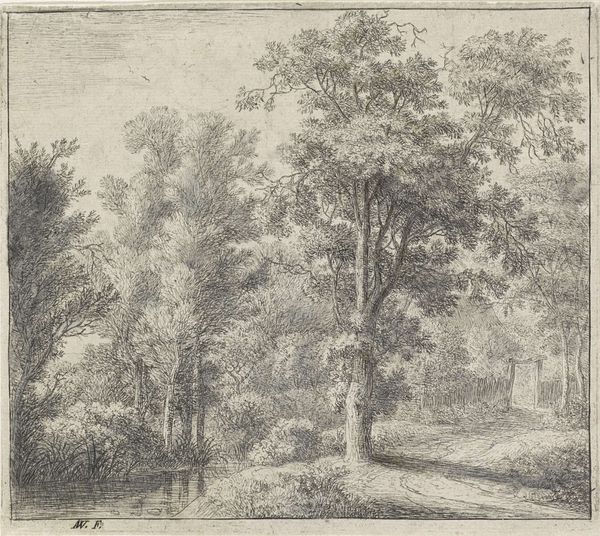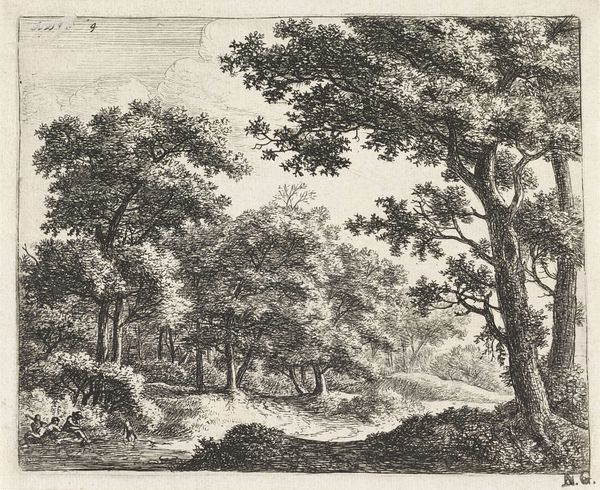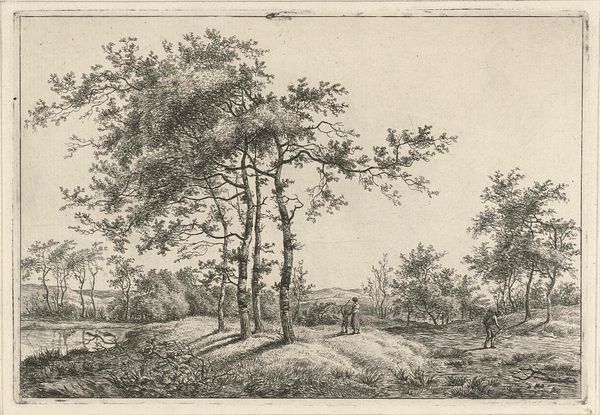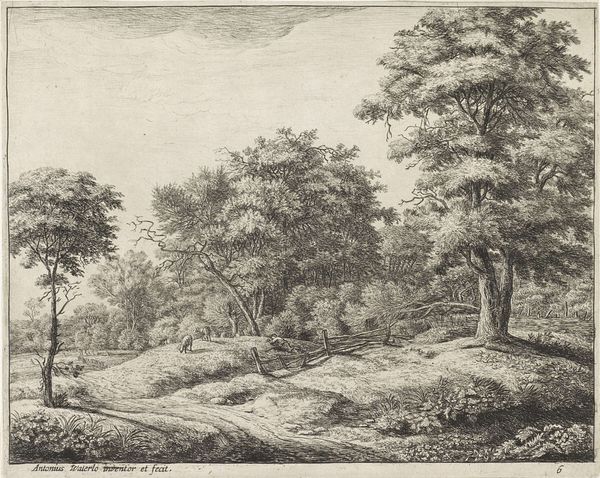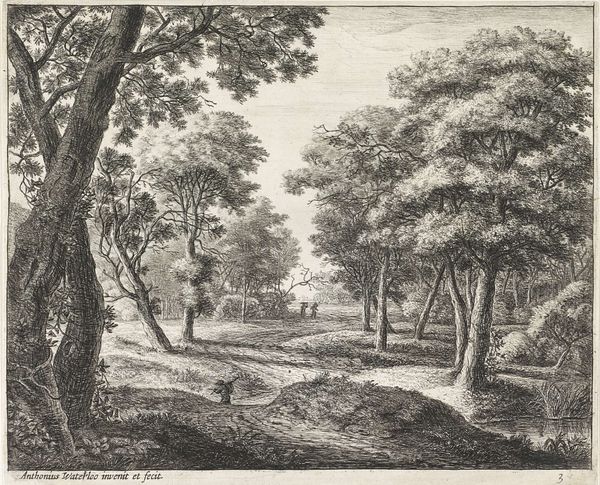
drawing, print, etching, engraving
#
drawing
#
baroque
#
pen drawing
#
dutch-golden-age
# print
#
etching
#
landscape
#
engraving
#
realism
Dimensions: height 88 mm, width 166 mm
Copyright: Rijks Museum: Open Domain
Editor: So this is "Boslandschap," or "Wooded Landscape," created by Lucas van Uden sometime between 1605 and 1673. It’s a pen drawing, etching and engraving. What strikes me is the way he’s used line to create such a sense of depth, and almost… nostalgia? How do you see this work, considering its historical context? Curator: It’s interesting you pick up on that feeling of nostalgia. Landscapes in the Dutch Golden Age, while seemingly objective depictions, often carried strong social and political undertones. Consider the period; the Netherlands had just fought for independence from Spain. This image isn't just trees, it’s a representation of Dutch territory, of hard-won freedom. What elements do you think emphasize this? Editor: Perhaps the tiny figure in the center of the frame, walking the path? It suggests ownership, doesn’t it? A quiet claim to the land. Curator: Exactly! And consider the burgeoning merchant class at the time. These landscapes became symbols of prosperity, and almost served as records of land ownership, a very direct connection to power. Think of it as an early form of landscape photography, meant for a very specific kind of patron. Does that shift your interpretation? Editor: Absolutely. I was seeing a pretty scene; now I see a statement about Dutch identity and wealth. Did the growing art market also influence the production of pieces like these? Curator: Undoubtedly. Artists like van Uden were responding to a market hungry for these kinds of images. Etchings and engravings, in particular, were easily reproduced, allowing for wider dissemination of these powerful, nationalistic images. It made art more accessible, which democratized it, while simultaneously consolidating power. Editor: It’s amazing how much historical context can change your perspective on what initially appears to be a simple landscape. Curator: Indeed. It underscores the importance of understanding the forces at play in shaping not only the production of art, but its consumption as well.
Comments
No comments
Be the first to comment and join the conversation on the ultimate creative platform.
